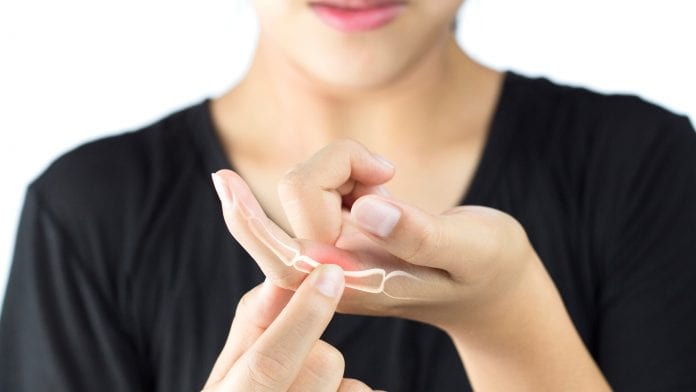
Researchers have put forward new insights that may inform the search for new treatments for melorheostosis.
Researchers at the National Institutes of Health have discovered a second gene that causes melorheostosis – a group of rare diseases that often involve painful and disfiguring overgrowth of bone tissue. The researchers are working to develop an animal model to test for potential treatments.
The gene, SMAD3, is part of a pathway that regulates cell development and growth.
The study was published in the Journal of Experimental Medicine.
SMAD3 mutations
Melorheostosis is a rare disease, affecting around 1 in 1 million people, and its causes have long been unknown.
To find out which gene causes this rare disease a biopsy was taken directly from the affected bone and was compared to unaffected bone. This method had already been tested by the researchers to discover the gene for ‘dripping candle wax bone disease’, a form of melorheostosis in which excess bone growth appears to drip from the bone surface like hot wax. In that study, mutations in the gene MAP2K1 accounted for eight cases of the disease among 15 patients.
In the current study, researchers scanned the exome – the part of the genome that codes for proteins – and found mutations in the affected bone. These mutations occurred during the patient’s lifetime rather than being inherited from parents and are not present in all the cells of the body.
The researchers found SMAD3 mutations in four of the patients who did not have mutations in MAP2K1. SMAD3 is involved in a pathway crucial for skeletal development both before and after birth. The SMAD3 mutations increase the maturation of bone-forming cells and are involved in a cellular pathway distinct from the MAPK2K1 pathway.
The findings provide insight that could pave the way for future treatments for melorheostosis.








I have melorheostosis in my right hand/arm and this gives me hope. I’m currently 19, and the pain is worsening as I age. I’m hoping there’s treatments soon that are effective! Thank you for this article!
Angelina Tracy
I have it in my left hand, specifically my 5th metacarpal. It has led to an injury of my Extensor Carpi Ulnaris tendon, and turned it into a chronic injury.
I’m 28. Fingers crossed the bone doesn’t continue to grow. It has ruined a lot of physical hobbies I have/had.